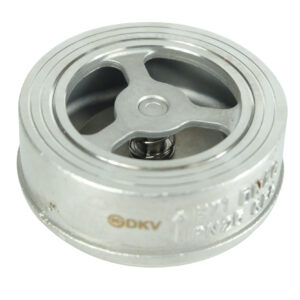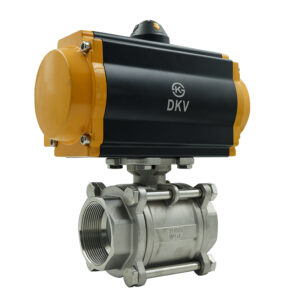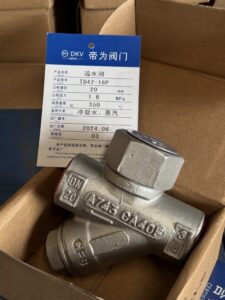
What Is a Check Valve and How Does It Work?
What Is a Check Valve and How Does It Work? Introduction — Why Check Valves Matter in Industrial Systems In every pipeline system, fluid needs
In every industrial steam system — whether in a refinery, food processing plant, or power station — steam traps quietly play one of the most critical roles:
removing condensate and non-condensable gases without losing live steam.
Despite being small and often overlooked, a malfunctioning steam trap can lead to energy loss, corrosion, water hammer, or even costly downtime.
This article explains in simple but professional terms what a steam trap is, how it works, the main types available, and how to choose the right one for your plant.
Whether you’re a maintenance engineer or a procurement manager, understanding steam traps helps ensure your system’s efficiency, reliability, and safety.

A steam trap is an automatic valve designed to discharge condensate (water formed when steam cools down) and air from a steam system, while preventing live steam from escaping. It acts as a one-way “drain” that differentiates between steam and condensate based on density, temperature, or pressure.
Without a steam trap, condensate accumulates in the pipeline or heat exchanger, reducing heat transfer and potentially causing water hammer — a dangerous pressure surge that can damage valves and piping.
Engineer’s note: Even a single failed open steam trap can waste hundreds of kilograms of steam per day — translating into thousands of dollars in annual losses.
The working principle of a steam trap depends on its internal mechanism, but the goal is always the same: automatically drain condensate while holding back live steam.
When steam loses heat, it condenses into water (condensate). Since condensate is denser and cooler, a properly designed steam trap senses these differences and opens a discharge port only when condensate is present.
There are three main working principles:
Basic operating principles of thermodynamic, thermostatic, and mechanical steam traps.
Maintenance tip: Always install a strainer before the trap to prevent dirt from clogging the internal mechanism.
There are several types of steam traps, each suitable for different applications and pressure ranges. Choosing the right one depends on your system’s operating conditions.
Compact and durable, this type works well in high-pressure lines. It operates using the pressure difference between steam and condensate. Common in steam distribution networks and tracing systems.

Features a ball float that rises and falls with condensate level. Provides continuous discharge, ideal for heat exchangers, dryers, or any system with a steady condensate load.

Uses an inverted bucket as the mechanism. The bucket floats when steam enters, closing the outlet; when condensate fills, the bucket sinks, opening the discharge. Known for robustness and long service life.

A large manufacturing facility once discovered 25% of its steam traps failed open — wasting an estimated US$80,000 worth of steam annually. Regular maintenance and ultrasonic testing could have prevented that.
Recommendation: Inspect traps at least every 6–12 months and replace faulty ones promptly.
Steam traps are used across various industries that rely on steam for heating, processing, or power:
Example: A textile factory replaced outdated mechanical traps with thermodynamic types, reducing maintenance downtime by 20% and saving over 15% in steam energy costs.
Expert tip: Always include Y-strainers upstream of steam traps and check valves downstream to prevent backflow and clogging.
At DKV Valve, all steam traps comply with ISO 9001 quality management and CE certification.
Our products are tested for leak-tight performance, pressure resistance, and thermal response under simulated plant conditions.
With over 40 years of manufacturing experience, DKV supplies industrial customers in 60+ countries, ensuring reliable delivery and 18-month warranty coverage.
Looking to optimize your steam system efficiency?
Contact DKV Valve to get technical datasheets, pricing, or samples of our thermodynamic and float-type steam traps.
Our engineering team can help you select the ideal model for your process.

What Is a Check Valve and How Does It Work? Introduction — Why Check Valves Matter in Industrial Systems In every pipeline system, fluid needs

What Is a Pneumatic Valve ? In modern industries, the performance of a valve often determines the efficiency, reliability, and safety of a process system.Pneumatic

What Is a Steam Trap & How Does It Work? Introduction — The Hidden Hero in Steam Systems In every industrial steam system — whether

Why Use a Globe Valve Instead of a Gate Valve? A Practical Guide for Engineers & Procurement Managers Introduction — Making the Right Valve Choice

What Is the Main Advantage of a Butterfly Valve? Introduction — why this question matters When you plan an industrial piping system, valve selection affects

Electric Valves: Comprehensive Guide for Industrial Applications In modern industrial automation, electric valves play a critical role in regulating fluid flow with precision and reliability.
Poly Center T41601, Le Cong Town, Shunde District, Foshan City, Guangdong Province, China
We will contact you within 1 working day, please pay attention to the email with the suffix “@dkvchina.com”.
We will contact you within 1 working day, please pay attention to the email with the suffix “dkvchina.com”.